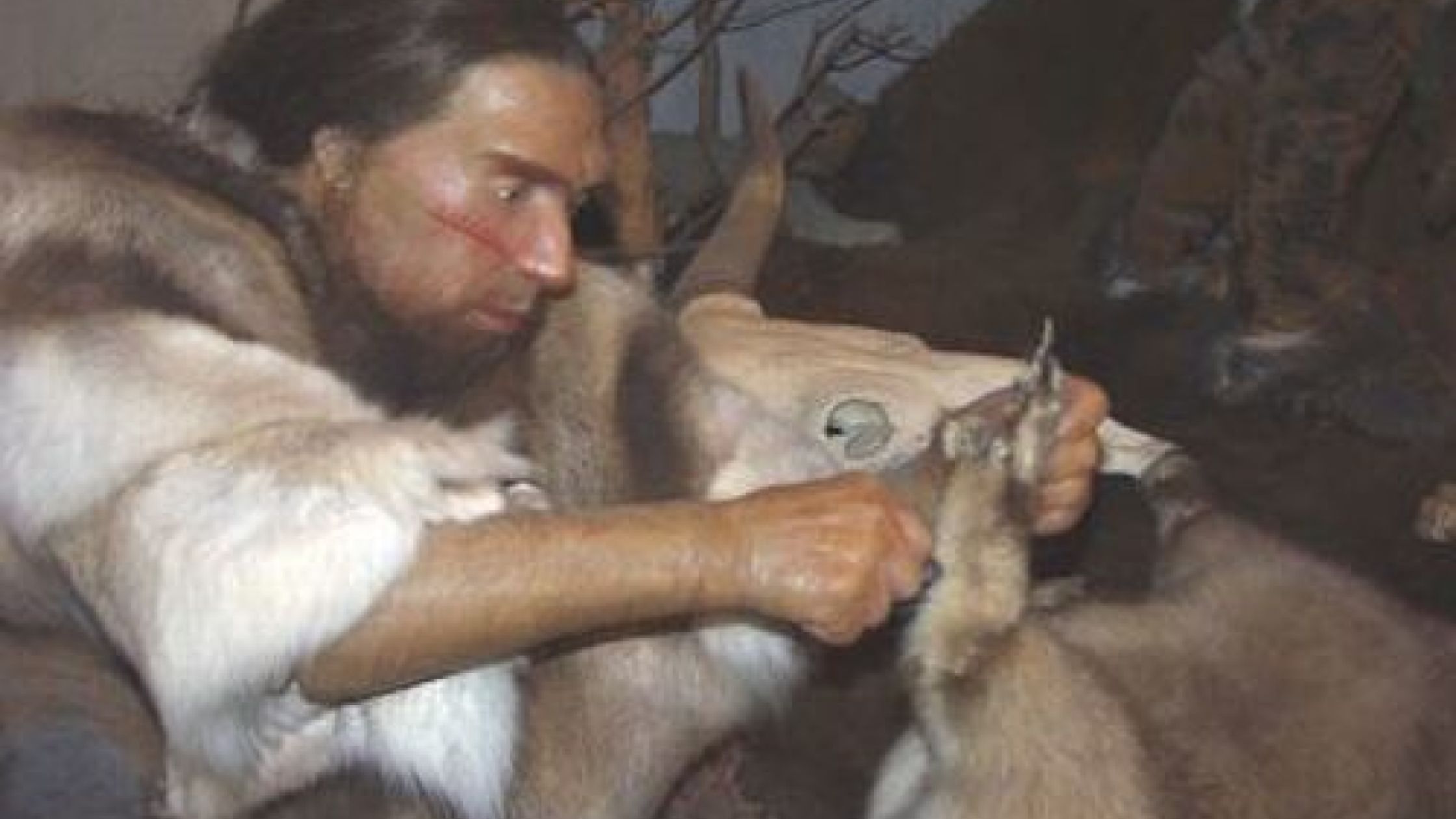Modern Humans: Were We Really Better than Neanderthals, or Did We Just Get Lucky?
We’ve all heard the story: dim-witted Neanderthals couldn’t quite keep up with our intelligent modern human ancestors, leading to their eventual downfall and disappearance from the world we know now. Apparently they needed more brain space for their eyes. The authors of a recent PLOS ONE paper are digging into the ideas behind this perception, and take a closer look at eleven common hypotheses for the demise of the Neanderthals, comparing each to the latest research in this field to convince us that Neanderthals weren’t the simpletons we’ve made them out to be.
The authors tackled ideas like the Neanderthal’s capacity for language and innovative ability, both often described as possible weaknesses leading to their decline. Analyzing the published research on each topic, they found that archaeologists often used their finds to “build scenarios” that agreed with the running theories of human superiority, and that some long-held truths have now been challenged by recent discoveries and ongoing research at the same excavation sites.
As one example, researchers who found shell beads and pieces of ochre and manganese in South Africa—used as pigments—claimed them as evidence of the use of structured language in anatomically modern humans. While we can only guess when linking items like these to the presence of language, new findings at Neanderthal sites indicate that they also decorated objects with paints and created personal ornaments using feathers and claws. Whatever the anatomically modern humans were doing in South Africa, Neanderthals were also doing in Europe around the same time, negating the claim that this ability may have provided the anatomically modern humans with better survival prospects once they arrived in Europe.
Another set of South African artifacts led the archaeological community to believe that anatomically modern humans were capable of rapidly improving on their own technology, keeping them ahead of their Neanderthal contemporaries. Two generations of tools, created during the Stillbay and Howiesons Poort periods, were originally believed to have evolved in phases shorter than 10,000 years—a drop in the bucket compared to the Neanderthals’ use of certain tools, unchanged, for 200,000 years. However, new findings suggest that the Stillbay and Howiesons Poort periods lasted much longer than previously thought, meaning that the anatomically modern humans may not have been the great visionaries we had assumed. Additionally, while Neanderthals were not thought capable of crafting the adhesives used by anatomically modern humans to assemble weapons and tools, it is now known that they did, purifying plant resin through an intricate distillation process.
We’re all living proof that anatomically modern humans survived in the end. Perhaps in an effort to flatter our predecessors, we have been holding on to dated hypotheses and ignoring recent evidence showing that Neanderthals were capable of a lot more (and perhaps the anatomically modern humans of a lot less) skill-wise than previously believed. Genetic studies continue to support the idea that anatomically modern humans and Neanderthals interbred and show that the genome of modern humans with Asian or European ancestry contains nearly 2% Neanderthal genes, a substantial quantity considering 40,000 years and 2000 generations have passed since they ceased to exist. These genes may have helped modern humans adjust to life outside of Africa, possibly aiding in the development of our immune system and variation in skin color. Researchers believe that the concentration of Neanderthal genes in modern humans was once much higher, but genetic patterns in modern humans show that hybrid Neanderthal-Human males may have been sterile, leaving no opportunity for their genes to be passed to the next generation.
So, while they may not walk among us today, we have Neanderthals to thank for some major adaptations that allowed us to thrive and spread across the planet. Too bad they’re not here to see the wonderful things we were able to accomplish with their help.
Related links:
Picked Clean: Neanderthals’ Use of Toothpicks to Fight Toothache
Sharing was Caring for Ancient Humans and Their Prehistoric Pups
Citation: Villa P, Roebroeks W (2014) Neandertal Demise: An Archaeological Analysis of the Modern Human Superiority Complex. PLoS ONE 9(4): e96424. doi:10.1371/journal.pone.0096424
Image 1: Neandertaler im Museum from Wikimedia Commons

